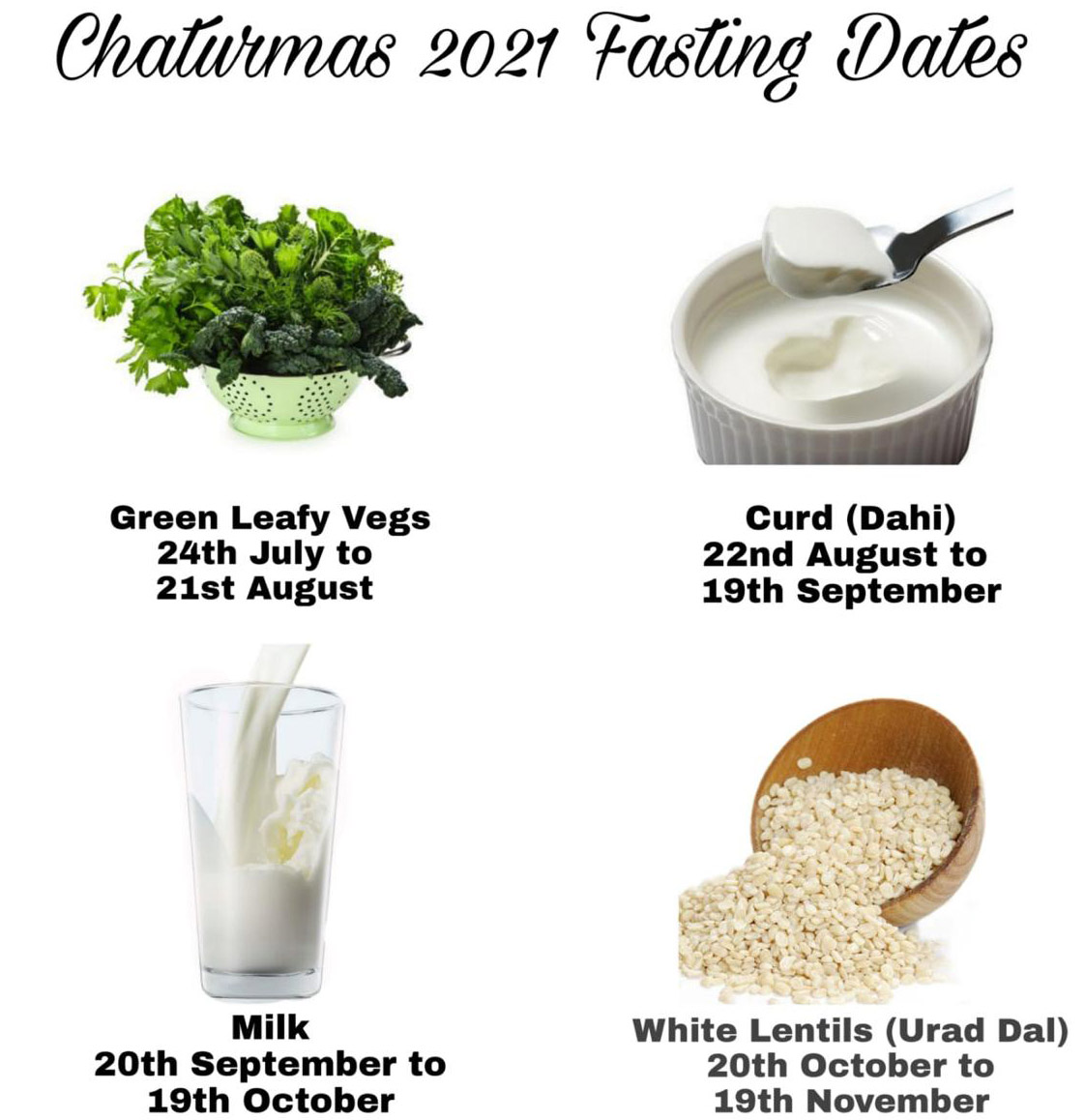
The fundamental objective of religion is to guide and direct the course of existence towards peace while, at the same time, keeping the experience of being alive both joyful and healthful. For a matter of fact, religion and health have a deep connection, and in a positive way. Generally speaking, religious involvement is associated with better health outcomes. Many of our vratas (fasts) and religious activities (dharmik krtya)directly bear upon the betterment of general health of our body and mind. Morning bath, complete dietary abstinence called Nirahara Upawasa or abstaining from water called Nirjala Upawasa (fasting), abstaining from certain food ( e.g. salt on Sundays) or activities (e.g. shaving and tonsuring on Tuesdays or Thursdays) are just a few examples of popular religious practices which are directly linked to health benefits as proven by modern research. This is the positive aspect of the Vedic religion, something developed through insight, experimentation and experience over a period of time. Similarly the Chaturmasya Vrata, too, is wholly associated with our health and regulation of bodily activities has positive effects. Ayurveda says:वर्षासु न गच्छति शरदि न भक्षति हेमन्तशिशिरयोरत्ति। वसन्ते भ्रमति ग्रीष्मे स्वपति सोरुक् सोरुक् सोरुक्।। … that is, those that do not travel during rain (monsoon), stay away from overeating during autumn, eat to the fullest during early winter and chilly winter, take the air as much as possible (by walking and breathtaking exercises) during spring, and sleep a lot during summer live a disease free life.

Chaturmasya vrata is observed in the four months overlapping late summer, rainy season and onset of autumn (roughly June-July to September-October) and can be viewed in the same context of better health outcomes. Regulations of this holy period of four months primarily teach us to bind ourselves to meditating at one place. Undertaking Chaturmasya vrata is an integral path of religious virtue in the life of a sanyasi (ascetic). For the eight months in a year a sanyasi sets about long journeys across the length and breadth of country for religious intercourses, but these four months see them staying put exclusively at one place and spending time in learning, teaching, and meditating. Interestingly, Chaturmasya vrata is equally regarded in all divisions of Sanyasa and has express significance in Buddhism and Jainism as well.
As for the Sanatana Vedic dharma, it is said in Narada Parivrajaka Upanishada (saptamodesha)-अथ यतेर्नियम: कथमिति पृष्टम् नारदं पितामह: पुरुस्कृत्य विरक्त: सन्यो वर्षासु ध्रुवशीलोष्टौ मास्येकाकी चरन्नेकत्र निवसेद्भिक्षुरभयात्सारंगवदेकत्र न तिष्ठेत्।।… that is,
“Upon asked by Narada as to what rules apply to a sanyasi, the Pitamah defined a sanyasi as that one who, detached from the outer world, stays put at one place during rainy season, moves about unaccompanied, and does not inhabit with fellow mendicants purely out of fear, like a herd of deer. Clearly, sequestered existence for spiritual activities during rainy season is primal obligation in the life of a sanyasi. In the tradition of Shankracharya, whereas it is bound upon a sanyasi to not stay for more than a night in a village and five nights in a city but during the rainy season this normative discipline is altered and a sanyasi is directed to prolong his stay for four months.
Sanyasis at Vrindavan during Chaturmasya
We come across references of places where Buddha had his Chaturmasya sojourns and all of them without exception find recognition as teertha ( holy place of pilgrimage) in Buddhism. Honour goes to Vaishali for serving as the last of his Chaturmasya halts. It was where Buddha spent the rainy season prior to his mahanirvana in a bamboo forest near the Monkey Lake (Markata Hrada). The Mahabharata professes Chaturmasya vrata through ascetic Panchshikha (See Shanti Parva320/26). Even today sanyasis decide upon a particular place to stay and exercise active ascetics during the whole period of Chaturmasya. They do not move out until it ends in four months.
The agency of Dharmashastra in the Vedic Dharma professing Chaturmasya is widely spoken about in texts such as Kritya-tattva (कृत्यतत्व) and Smrti-tattva (से मृतितत्व) by Raghunandan. Similarly, Bhattoji Dikshit has elucidated upon it in Tithi Nirnaya (text deciding of the date) and decides the time period of Chaturmasya extends from the lunar month of Ashadha to Kartika, but other schools of Sanatana Dharma take Chaturmasya from Ashadha Samkranti to Kartika Sankranti, that is, transition of Sun from Gemini to Libra in the celestial sky. The Nepal school believes that it is on Guru Purnima that sanyasis take to mediating in one place in caves or forests. The Vaishnava tradition holds the Ashadha Shukla Ekadasi as the date of commencement and Kartika Shukla Ekadasi as the end of the Chaturmasya. These two Ekadasis are respectively called Deva-shayani and Deva-utthani Ekadasi, signifying that the period is meant of sleep of even the Devas.
Bhattoji in his book Titthi Nirnaya quotes Mahabharata to set Ashadha shukla Ekadashi as the onset of Chaturmasya and advocates that the ascetic discipline of this vrata is ideal not just for sanyasis, but for family persons as well to achieve a higher spiritual state. For the latter, he prescribes worshipping lord Vishnu during Chaturmasya and forbids consuming animal products, meat, jaggery, oil, etc. during these months. He advises mantra reminiscing and mediatation (japa and dhyana) and austerity of observing silence (mauna) during the Chaturmasya for as much time as is possible. Based on Mahabharata, Bhattoji dictates that Chaturmasya is a nitya vrata (an austere discipline of daily life) – वार्षिकांश्चतुरो मासान् वाहयेत केनचिन्नर:। व्रतेन नोचेिदाप्नोति किल्बिषं वत्सरोद्भवं।।, that is; not following it is a transgression of religious discipline susceptible to a disastrous destiny. In other words, irreverence to religious need of non-indulgence during chaturmasya predicates consequences of sinning.
However, it is said here that if for some reason this discipline is not possible to follow for four months at a stretch then it can be followed when the sun is in tula rashi during the month of Kartika.
Hemadri deems Chaturmasya as a fast observed to please Lord Vishnu and to support his contention he quotes Bhavishya Purana advising setting up an idol of Vishnu in Chaturmasya and meditating before it. In Bhavishya Puranam the Sankalp vakya ( vow statement) of this vrata goes as एवं तां प्रतिमां विष्णो: पूजयित्वा स्वयं नर:।प्रभाषेताग्रतो विष्णो: कृतांजलि पुटस्तथा।।वार्षिकांश्चतुरो मासान् देवस्योत्थापना विधि।इयं करिष्ये नियमं निर्विघ्नं कुरु मेsअच्युत।।

Beginning with Sanyasis camping at the same place for four months of rain, it subsequently, as a religious edict, applied to the family persons, too, and they were directed to worship Vishnu staying within their homes during this period of four months. In today’s perspective, the agency of Dharmashastra has extended the range of devotional activities. Believers should devote time in Vishnu worshipping and also observe fasting rituals and festivities related to Ganesha, Mansa,Naga deva,Durga and the Pitaras that fall in Chaturmasya. Coincidentally, most of the important festivals of Sanatana Vedic Dharma like Ganesha Chaturthi, Naga Pancami,Ananta vrata, Mahalaya Shraddha fortnight, Krishnashtami, Parshva-parivartini Ekadasi, Rishi Pancami, Navaratri, Dussehra, Diwali, etc. fall in the Chaturmasya period. It is also believed that Lord Vishnu takes to his sleeping chamber in the Ksheera Sagara during the Chaturmasya, contrary, in a manner of speaking, to the guideline prescribed by all agencies to worship Vishnu in this period.
The onset of Chaturmasya is astronomically reckoned with Sun’s transit through Gemini to Cancer within the constellation of Orion, the warrior of the winter sky, called Mrigavyadha in Sanskrit. The transition takes place in June-July from a group of three faint stars called Mrigashira, being in the form of deer head, in the belt of Orion to the red star in Orion called Ardra, the star of Rudra, the lord of storms. The word Ardra in Sanskrit means moist and wet, aptly describing the beginning of rainy season. The Vedic people welcomed the natural phenomena associated with Chaturmasya which brought rains, enriched the great riverine plains with alluvium and finally bestowed upon them the riches of summer harvest. But our wise ancestors were also seized of the health risks due to excessive humidity and high ambient temperature and various natural disasters in the form of floods, snake and insect bites, water borne diseases and rotting microbes. Hence, the Ayurvedic prescription for Chaturmasya was to avoid certain foods which could harbour disease causing worms or fermented fast. In Ashadha, green leafy vegetables, in Shravana curds, milk in Bhadrapada and de-husked black lentils (White in colour) in Ashwin-Kartik. Pilgrimages were proscribed and common folks were not allowed to perform any rite of passage like marriage, upnayana, mundana (tonsuring), etc. In a nut shell, this vrata takes its origin as a religious discipline directed at forbidding travelling and exposure to the extremes of weather during the monsoon. The prescript of Chaturmasya was so designed as to avoid the perils of journeying through overflowing water bodies and minimising the health risk in a hot and humid weather as our body has the hardest ever time cooling itself off. Humidity and heat can also affect our brain. The technique of rest, silence and meditation was integrated into the religious rites in the season of the Chaturmasya.

It may be seen that the brightest star in Orion is called Sirius or the Dog Star in the West and the period of its helical rise coincided with a spell of hot and humid weather what the Greeks called as dog days of summer and considered it to be unlucky. They also observed health issues happening in this season but they did not work out any lifestyle management for their people, something like the Chaturmasya in the Vedic religion. With heat waves occurring more often than they used to in the West, isn’t observing the Chaturmasya a sane idea?






